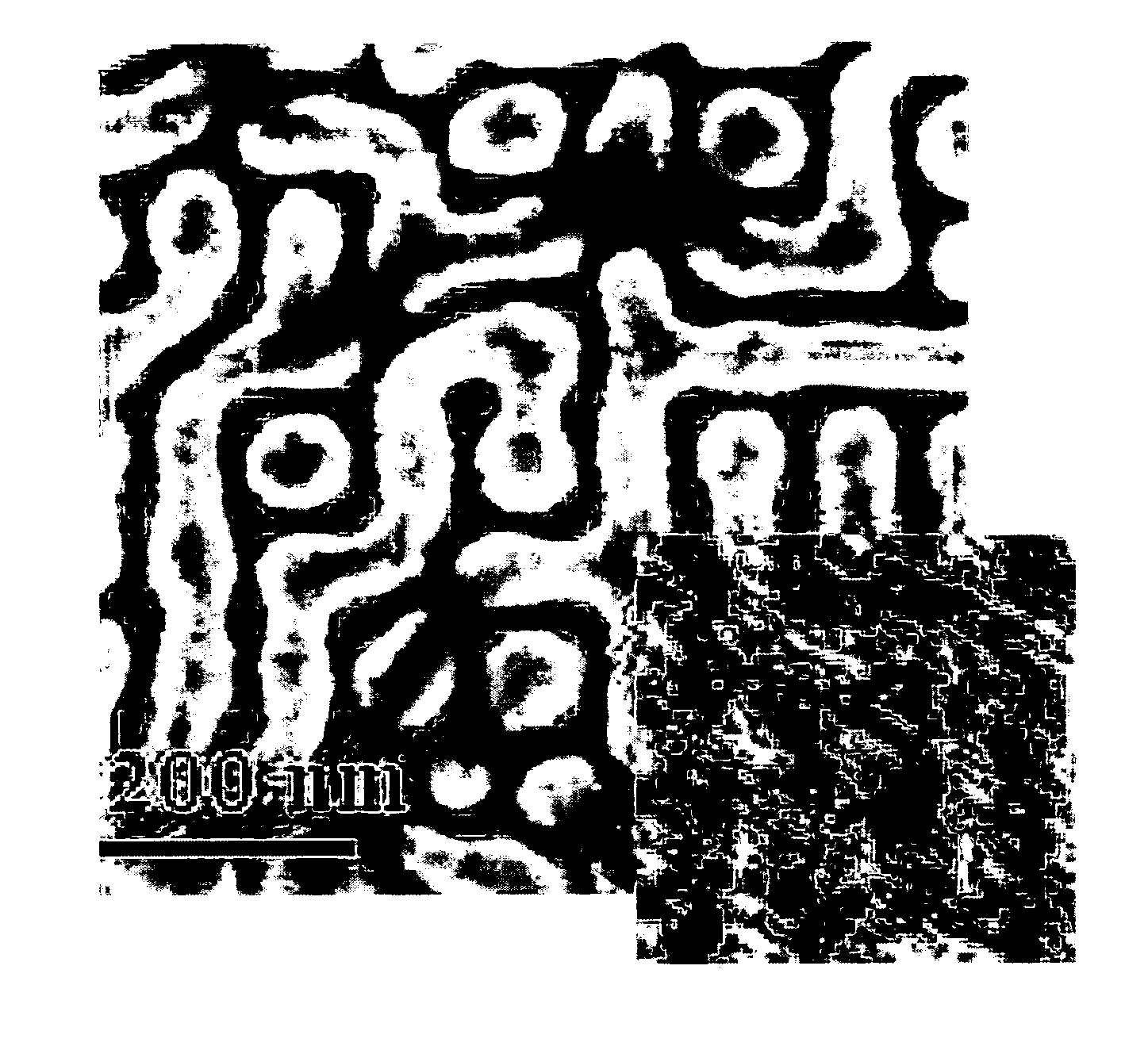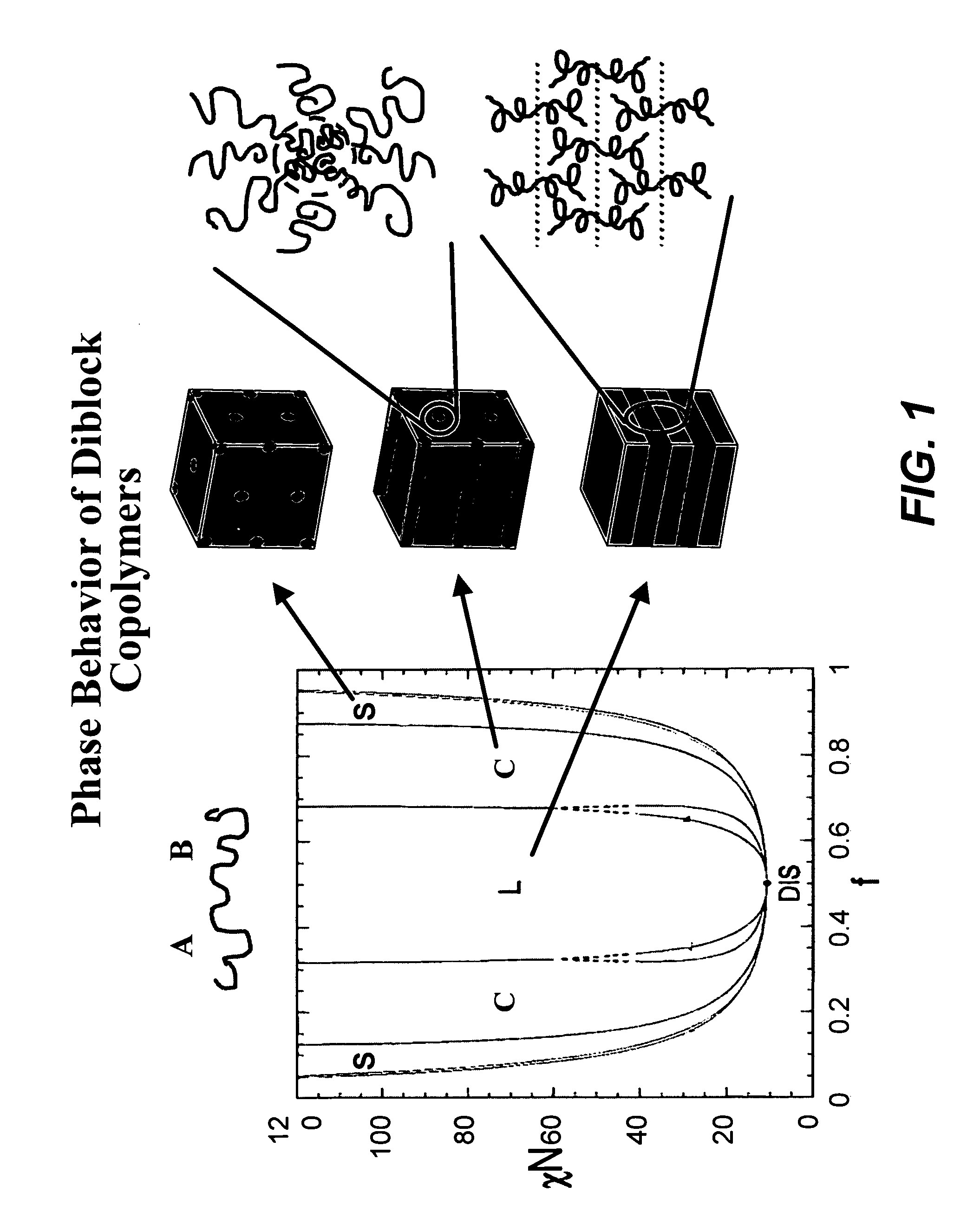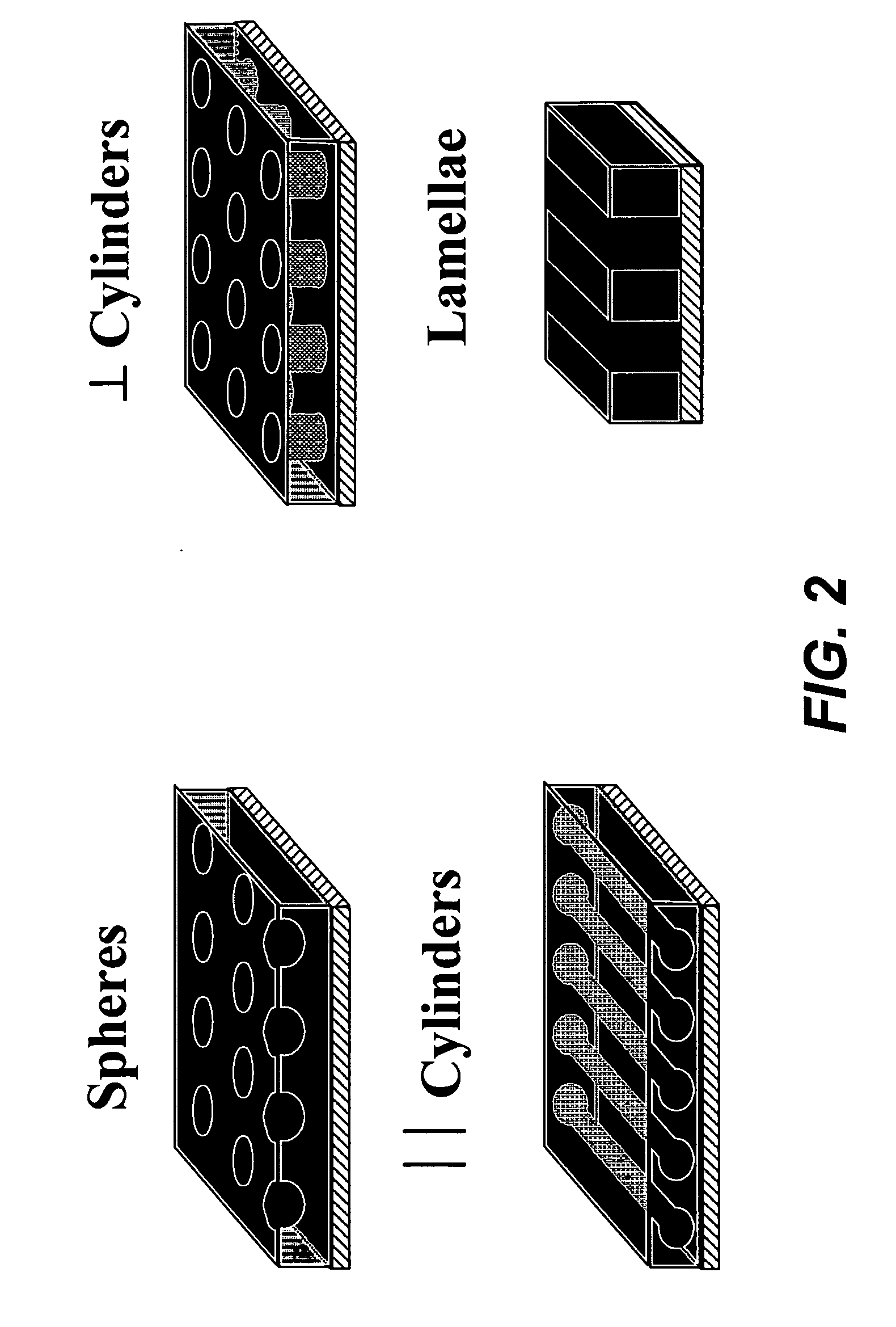Fabrication of complex three-dimensional structures based on directed assembly of self-assembling materials on activated two-dimensional templates
a self-assembling, three-dimensional structure technology, applied in the field of nanofabrication techniques, can solve the problems of limited use of directed self-assembly, defects in patterns of approaches relying solely on copolymer self-assembly, and limitations of existing methods of using block copolymer materials
- Summary
- Abstract
- Description
- Claims
- Application Information
AI Technical Summary
Benefits of technology
Problems solved by technology
Method used
Image
Examples
example 1
[0096]A ˜4 nm brush of polystyrene, PS, was grafted to a silicon substrate. A thin film of photoresist was subsequently deposited and patterned by four-beam extreme ultraviolet interference lithography. The resultant patterns in the photoresist layer consisted of square arrays of spots with nearest neighbor center-to-center distances of 71 nm≦Ls≦113 nm and a wide range of spot radii, R. The sample was then treated with an oxygen plasma such that PS brush regions not covered with photoresist were chemically modified to be oxygen-rich and highly polar. Removal of the remaining photoresist resulted in the desired chemically patterned substrate. A 44 nm film of a symmetric ternary blend, consisting of 60 wt. % poly(styrene-b-methyl methacrylate) (PS-b-PMMA, Mn=104 kg / mol, bulk lamellar period of 49 nm), 20 wt. % PS (40 kg / mol), and 20 wt. % poly(methyl methacrylate) (PMMA, 41 kg / mol), was deposited on the patterned substrate and annealed at 190° C. for 7 days. In thin films on uniform s...
example 2
[0103]A patterned substrate was prepared having a Ls of 1.21L0 and R of 0.41L0 and a ternary PS-b-PMMA / PS / PMMA blend was deposited as described in Example 1. Thus, Ls was the same as for the film shown in FIG. 8A in Example 1, but the ratio R / Ls increased. The substrate was less preferential to PS on average than that in Example 1 (as the area of PMMA preferential wetting spots is increased). The amount of PS near the top surface of the film increased facilitating the formation of a bulk-like lamellar morphology. This can be seen in FIG. 9A, an SEM image of the surface of the film (with an AFM image inset to provide a more accurate depiction of the PS / PMMA dimensions), and FIG. 9B, which shows results of the SCMF simulation. Comparing FIGS. 9A and 9B with FIGS. 8A and 8B, it can be seen that for the film prepared in this Example, neighboring necks join into portions of standing lamellae that are connected to the QPL at the substrate and orient along the axis of the QPL. Also, by inc...
example 3
[0104]A patterned substrate was prepared having a Ls of 1.64L0 and R of 0.51L0 and a ternary PS-b-PMMA / PS / PMMA blend was deposited as described in Example 1. The resulting film is shown in FIGS. 10A and 10B, FIG. 10A being the SEM image, FIG. 10B the top view resulting from the SCMF simulation. The necks join into short portions of lamellae as in Example 2. Although the length scale, Ls, of the substrate pattern substantially exceeds the bulk period, L0, the substrate interactions force the formation of a QPL at the substrate. The width of the necks and short lamellar portions on the top, however, remains largely unaltered. The portions of lamellae either run along the diagonal or align parallel with the axis of the underlying square lattice. In the latter case, they bridge the PMMA-rich domains of the QPL. In response to the increase of the dimensions of the QPL, all necks now register with the bridge positions that are narrower than the interstitial ones. The bridge positions form...
PUM
| Property | Measurement | Unit |
|---|---|---|
| thick | aaaaa | aaaaa |
| length | aaaaa | aaaaa |
| length | aaaaa | aaaaa |
Abstract
Description
Claims
Application Information
 Login to View More
Login to View More - R&D
- Intellectual Property
- Life Sciences
- Materials
- Tech Scout
- Unparalleled Data Quality
- Higher Quality Content
- 60% Fewer Hallucinations
Browse by: Latest US Patents, China's latest patents, Technical Efficacy Thesaurus, Application Domain, Technology Topic, Popular Technical Reports.
© 2025 PatSnap. All rights reserved.Legal|Privacy policy|Modern Slavery Act Transparency Statement|Sitemap|About US| Contact US: help@patsnap.com



